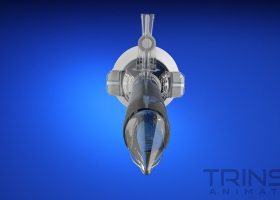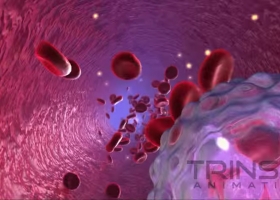Transcription:
In this procedure we are using the vilex locking plate system for Arthrodesis of the 1st MPJ.
We will be using a transverse screw to provide compression and a looking plate to provide the mechanical support, the locking plate holds our threaded to accept the locking screw.
Make a small dorsal incision to expose enough bone on both side of the joint for the placement of the plate carefully free the bone from the soft tissue after exposing the joint it may be necessary to reshape the joint using the match renners to fit the meditorsolen with in the fallen view end .
Drive the K-wire 13mm into the center of the meditarcel head use the concave renner to shape the bone remove the wire and repeat the process on the fallen view end.
Check the fit of both ends joints correct the PASA as necessary we are now ready to implement the locking plate the MPJ plate is pre bend 11 degree medially and dorsally as well.
The bend should be positioned on top or near the joint drive a 16mm k-wire through the 2 positioning holes, one on each side of the joint, next implant 2 screws one on each side of the joint, the vilex plate system offers the surgeons the option to use solid or cannulated screws in either case, the screw should be centered perpendicular to the whole surfaces for cannulated screws use the blue centering tool with the 1.1mm cannulation, for solid non cannulated screws use the gold drilled centering tool with the 2.0mm cannulation.
In this demonstration we will use primarily cannulated and locking screws, Screw the centering tool into the distal hole drive the k-wire through the falix making sure the k-wire punctures the cortex , remove the centering tool and use the depth gauge to measure the wire screw length slide the brown 22mm screw over the guide wire and drive the self drilling and self tapping screw until the head screwed into the plate, remove the guide wire.
The second screw which is non locking and non cannulated is used to compress the orthodiceside, position 2.2mm drill away from the edge of the compression hole, so when the screw is seeded it pulls the joint together, drive the drill until it exists distal cortex, remove the drill, measure and drive the screw without engaging the plate remove the second pin, next add a 3.0 mm cannulated screw mediolateral across the joint imagine an oblique line from the falex to the meditorcal as shown.
Drive a 1.1mm guide wire mediolateral stop advancing after the wire exit the meditorcal side, measure for the required screw length, gently counter sink, slide the screw over the wire and use the cannulated screw driver to drive the screw Note how the bones are compressed as the screw advances.
Advance the cross screw until the head is seeded remove the guide wire tighten the compression screw add more locking screws repeat the procedure for the remaining available holes and close the procedure.
For more information please visit http://www.vilex.com



